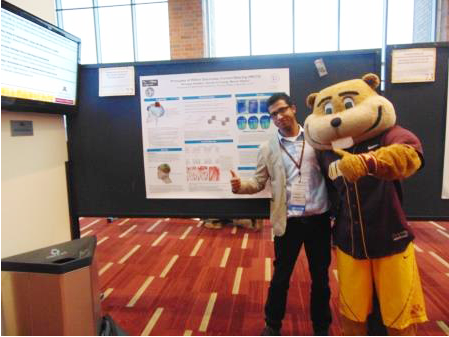Niranjan Khadka presented a poster at the Minnesota Neuromodulation Symposium
Poster Title: Principles of Within Electrode Current Steering(WECS)
Department of Biomedical Engineering, The City College of New York, CUNY, 160 Convent Ave, New York, 10031, USA
Within Electrode Current Steering (WECS), a novel method, applies to non-invasive electrical stimulation with two or more electrodes to enhance reliability and tolerability during tDCS. The underlying assumption of WECS is steering current within electrodes (to compensate for any non-ideal conditions at the surface), but without altering current distribution in the brain target. This technology leverages our technique for independently isolating electrode impedance and over-potential during multi-channel stimulation. Through an exemplary case example of a realistic electrodes (metal-rivets embedded in an electrolyte (saline or gel)) and head geometry (FEM), we demonstrated how current flow in brain is independent of current steering at the electrode. Three current split cases (even, partially uneven, and fully uneven), keeping total current (1 mA) fixed within the electrodes are tested. At the electrode-assembly interface with the skin, the current density distribution varied only incrementally across conditions (e.g. less than would be expected) with even minor changes in electrode assembly or skin properties. There was no difference in the predicted electric filed at the brain target under all three cases. Thus, with such electrode assembly design, current steering to any functional electrode would not significantly increase current density in the skin; hence, not effecting tolerability.
Date & time: April 17, 2015 11:30-1:00 pm
Venue: University of Minnesota, Twin City, Minnesota

